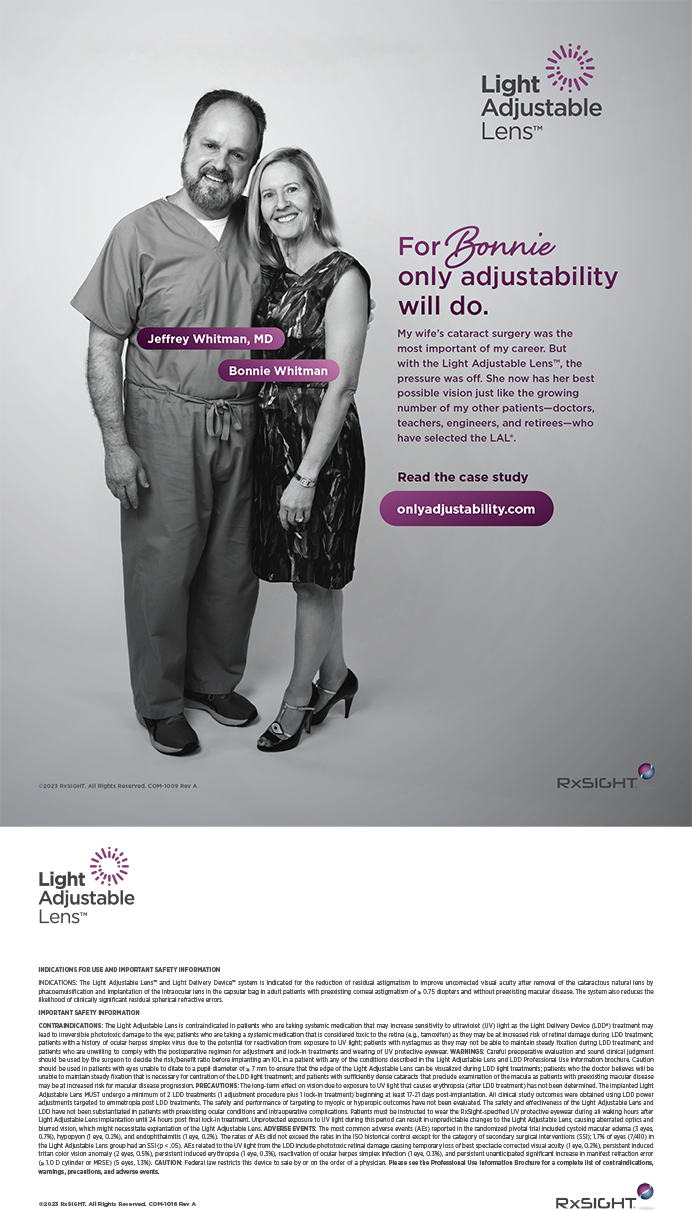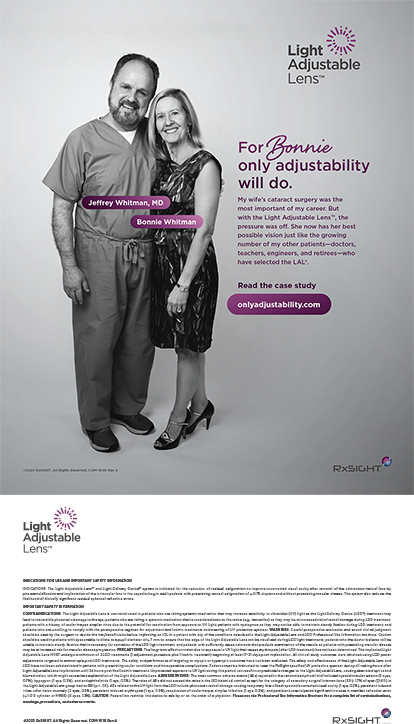A discussion of the evolution of cataract surgery would not be complete without addressing the process of becoming a cataract surgeon. Most ophthalmologists would select the specialty again over others if given the choice. We are fortunate to have landed in a field that combines surgery, medicine, acute care, chronic care, and patients in multiple age groups—all with a possibility of significantly improving a person's life. Moreover, especially in light of today's economic uncertainty, we are lucky to be in a stable and fulfilling profession. We must remember, however, how we got here. We did not become competent cataract surgeons easily. When we remember our first days of residency, our first foray into microsurgery, and then our first cataract surgery, we recognize that these were not simple transitions. Many a gray hair has sprung on the heads of the mentors who have suffered through teaching cataract surgery. Our achievements, however defined, are not ours alone. We owe our successes to those who have dedicated their careers to educating the novice surgeon.
MY JOURNEY
My journey started as a 4-year-old immigrant from South Korea (Figure 1). The sacrifices made by my parents to live in the land of endless opportunities, political freedom, and ingenuity were to be repaid by the future academic achievements of their children. Here in the United States, my siblings and I were taught that hard work pays off. I was lucky to enter an institution of higher learning that fostered creativity while teaching the basics. At Dartmouth College and, later, Dartmouth Medical School, I encountered the first of many mentors who would influence my future career. David Campbell, MD, a well-respected glaucoma specialist, became my advisor and introduced me to the world of ophthalmology (Figure 2). He inspired students with his intellectual curiosity and endless energy. He demonstrated how to think creatively and pursue a hypothesis. For example, as he pondered the cause of pigmentary dispersion syndrome, he wondered whether the midperipheral iris concavity were positional. To investigate this hypothesis, he examined a patient with pigmentary dispersion syndrome while he was in the normal seated position. Then, while the patient was prone, Dr. Campbell lay upside down on the floor to examine him with a handheld slit lamp.
As I began to consider ophthalmology residencies, Dr. Campbell was instrumental in helping me evaluate the different programs. In the end, I chose his alma mater, Massachusetts Eye and Ear Infirmary/Harvard Medical School. While there, I interacted with many dedicated teachers. Claes Dohlman, MD, PhD, was my most influential mentor. In his long and distinguished career, he has trained hundreds, if not thousands, of ophthalmologists. As the chairman emeritus of the department, Dr. Dohlman could have easily delegated the teaching of cataract surgery to a junior faculty member with stronger, more youthful coronary arteries. Instead, he single-handedly staffed the first cataract surgeries of each and every first-year resident. His calm demeanor in the OR reassured the nervous residents that, whatever disaster we created, he would be able to save us and expertly salvage the patient's eye. Even if the surgeries lasted over 2 hours or the nervousness of the first cataract surgery caused the resident to experience violent tremors, Dr. Dohlman never expressed frustration. Instead of becoming agitated when residents fumbled about, he simply cleared his throat, signaling that we had done something very foolish, like dialing in the IOL so far posteriorly that it rested on the macula.
I am fortunate to have had great teachers such as Fred Jakobiec, MD; Evangelos Gragoudas, MD; Edward Murphy, MD; Billy Powers, MD; Mark Kuperwaser, MD; Michael Rynne, MD; Roger Steinert, MD; and many others. I continue to grow and learn from every interaction with a colleague. I believe that teaching is a reciprocal practice. As teachers, we must explain each specific step in great detail, which in turn gives us a greater understanding of every aspect of surgery, no matter how minor or routine. Interacting with trainees forces a mentor to more fully evaluate his or her clinical decisions as well as to stay abreast of the newest medical developments. Teaching surgery is not without both mental and physical difficulty. Having spent many hours staffing the procedures of beginning cataract surgeons, I have often found myself wondering whether I should take deep venous thrombosis prophylaxis on those mornings.
FUTURE EDUCATIONAL EFFORTS
As the cost of health care increases and reimbursements decrease, the provision of medical education can become a financial burden. Fewer ophthalmologists can afford to volunteer their time to teach. Full-time academicians are pressed to generate sufficient income from their clinical activities, a situation that jeopardizes the amount of time that they can spend on educational endeavors for which they receive no remuneration. More economic incentives for teaching must be developed.
In order to better prepare residents for surgery, I created the annual Harvard Intensive Cataract Surgical Training course for second-year residents. The class offers focused lectures and an extensive wet lab curriculum (Figure 3). All of the 40 invited faculty members are nominated by their respective department chairperson as the best cataract surgery teacher at their institution. The number of participating residents is limited to 100 in order to ensure a small 1:2 student-to-faculty ratio. Similarly, Cynthia Chiu, MD, at University of California, San Francisco, has developed the COAST course to teach skills on complex cataract surgical techniques. These courses combine the efforts of faculty members to efficiently teach a larger number of residents instead of having each individual program duplicate the lessons. My colleagues and I hope that these regional and national courses enhance the quality of education while improving efficiency and minimizing costs.
Other innovative educational efforts include the EYESI surgical simulator (VRmagic GmbH, Mannheim, Germany) for vitreoretinal and cataract surgery and the Virtual Mentor computer program (Massachusetts Eye and Ear Infirmary). Since the limiting resource is often the teachers' availability, these new technologies attempt to create tools with which the student can practice and learn how to perform surgery without the presence of a teacher. The Virtual Mentor is a program that residents can use on any computer to "perform" cataract surgery. It allows the learner to click on actions, view the animated action, and receive valuable feedback as needed. The program also offers a library of resources, including tips from experts, video demonstration, and other references (Figure 4). John Loewenstein, MD, and I are currently developing this program at the Massachusetts Eye and Ear Infirmary. Such advances will, I hope, offer more choices of teaching methods and convenient opportunities to learn.
Exciting new programs complement and will never replace the role of human educators. No matter how far technology advances and how much the role of teaching can be computerized, personal interaction with an experienced surgeon will remain invaluable. I am grateful for all the efforts of my previous mentors, and I strive to continue the legacy of medical education.
Section editor emeritus Herve M. Byron, MD, is a clinical professor for the Department of Ophthalmology at the New York University School of Medicine in New York.
Bonnie An Henderson, MD, is a partner in Ophthalmic Consultants of Boston and an assistant clinical professor at Harvard Medical School. She holds a financial interest in the Virtual Mentor program and may receive a portion of the royalties from its future sales and distribution. Dr. Henderson may be reached at (781) 487-2200 ext. 3321; bahenderson@eyeboston.com.


